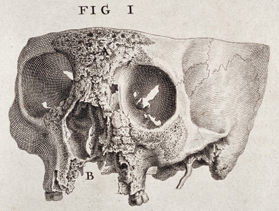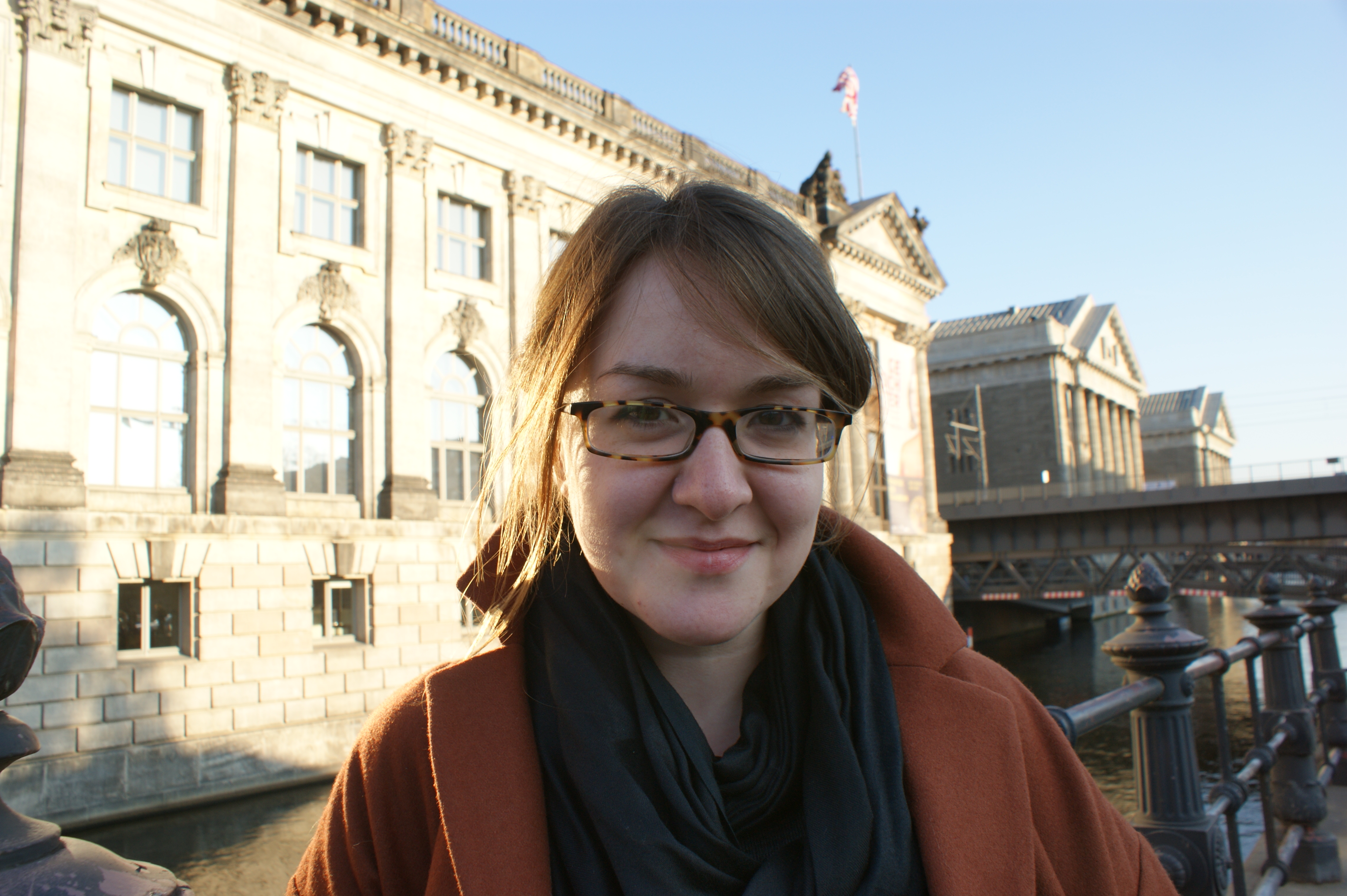Dr Harriet Palfreyman
Research Profile
2008 - 2012 PhD History 'Visualising Venereal Disease in London', University of Warwick (Wellcome Trust funded)
Nov/Dec 2011 Predoctoral Research Fellow, Max Planck Institute for the History of Science, Berlin
2007 - 2008 MA Social History of Medicine, University of Warwick (Wellcome Trust funded)
2004 - 2007 BA (Hons) History (1st Class), University of Warwick
Picturing the Pox: A (Very) Brief History
Current Research Interests
I am fascinated by the visual culture of medicine. The enormous amount of trust we place in twenty-first century visualization technologies such as X-ray, MRI, and ultrasound scans, the widespread use of photographic atlases and computer-generated models in the teaching of medical practitioners, and even the public’s abounding interest in exhibitions of plastinated human bodies suggests an inherent ‘visuality’ to modern medicine. What interests me is identifying how images, models, and preserved remains came to possess such centrality in our understanding of our bodies, health and disease.

My other driving interest is the history of infectious diseases, particularly the construction of medical knowledge about diseases. However rather than just studying the changing ideas about disease, I seek to uncover the people, practices, and places that interacted to create new knowledge.
I am currently in the early stages of devising a project that will marry these two interests - on the history of pathological images in the nineteenth century. As medical thinking moved away from a preoccupation with humoural balance and toward a conception of diseases as separate entities with visible, physical locations in bodily tissues, images of disease symptoms began to emerge as vital in the creation and dissemination of medical thinking.
Doctoral Thesis
Visualising Venereal Disease in London c.1780–1860

My PhD thesis explores the role of visual representation in the changing understandings of venereal disease from the later eighteenth century to the mid nineteenth. This was a period in which the identities of infectious diseases were undergoing profound changes. During much of the early modern period sickness was conceptualised as the result of humoural misalignment in the individual body, a view that came to change over the course of the eighteenth century. Through the practice of pathological anatomy – the linking of the morbid appearance of the internal body with external signs of disease – conditions such as venereal disease were given physical identities within the flesh. Simultaneously, visual representations of the body that had once depicted only healthy anatomical structure began to show diseased and decayed flesh. I argue that such visual representations, whether in the form of atlas illustrations, patient portraits, or pedagogical aids such as wax models, played a vital part in creating and disseminating new thinking about venereal disease.
Focusing on London, this project examines the place of visual representations in the classification of the disease, medical teaching and practice, and wider social responses to venereal disease within several different spaces in London’s medical marketplace, such as public museums, private schools, hospitals and university medical departments. I utilise a wide range of visual and material sources, from illustrations in medical books to watercolour portraits to pathological preparations. A selection of these sources can be viewed in the gallery below.
Department: History / Centre for the History of Medicine
Supervisor: Dr Claudia Stein
Funding: Wellcome Trust Doctoral Studentship
The Grim Gallery
How much I suffered last night, in my heel and in my ribs. Sheer torture... there are no words to express it, only howls of pain could do so. Alphonse Daudet, In the Land of Pain (1930).
I should not have recollected him, but the Circumstance of his having but one Leg, and one Arm, struck my Eye immediately; and his Face being much distorted with the Distemper, made me the more certain he was the sam Person; … I well remembered his being salivated several Times, and that he was discharged out of the House, pretty well; but he informed me it soon returned, and that he had been under almost every eminent Practitioner in Town and Country, and had since been salivated six or seven Times, but still the Symptoms after a little Time returned: I offered to order him some Medicines, but he told me he was determined to take no more, as he found it would kill him, therefore the sooner he was dead the better. He was now so infected, that several of his Bones were quite rotten; and he stunk so, that it was with Difficulty you could stand near him. - Surgeon J. Becket, after encountering a former patient on the street (1765).




 CLAP. A venereal taint; i.e. he went out a wenching, and got a clap. The Scoundrels Dictionary (1796).
CLAP. A venereal taint; i.e. he went out a wenching, and got a clap. The Scoundrels Dictionary (1796).
[Click on any of the images for expanded view and further information.]
Professional Development
Research Dissemination
Public Engagement
Book Reviews
In Progress
Workshop and Conference Papers
April 2012 Invited participant at the second study day of the AHRC funded project ‘The Origins of Science as a Visual Pursuit’ at the Department of History and Philosophy of Science, Cambridge University.
June 2011 'Visualising Venereal Disease in London c.1780 - 1860', 2nd Annual History of Medicine Postgraduate Summit, QMUL.
April 2011 '"The most dreadful progress of lingering sufferings": Images from the London Lock Hospital, 1849 - 1851', Association of Art Historians 37th Annual Conference, University of Warwick.
Oct 2010 'Visualising Venereal Disease: The functions of visual representations c.1780 – 1850', Scratching the Surface: The History of Skin, its Diseases and their Treatment, University of Birmingham.
July 2010 'Faces of Disease: Images and the Display of Knowledge about Venereal Disease in the Late Eighteenth Century', The Body on Display from Renaissance to Enlightenment Symposium, Durham University.
July 2010 'The Virtues of the Image: Seeing the Pathology of Venereal Disease in Eighteenth Century Britain', The Making of Early Modern Scientific Knowledge, University of Warwick.
May 2010 '"A parcel of rotten bones not worth delineating": The Emergence of the Pathological Image in Eighteenth Century Britain', University of Warwick Postgraduate Conference, University of Warwick.
June 2009 'Seeing the Disease: The Visual Culture of the Pox in London c. 1750 – 1850', Methods in Theory and Practice, the Wellcome Trust Centre for the History of Medicine at UCL.
Administrative Experience

May 2011 Assisted with organizing The Irish Giant a theatre production devised by Cartoon de Salvo as part of the Centre for the History of Medicine's public engagement programme. The Irish Giant looks at the life and death of the eight foot tall Charles Byrne and his relationship with well-known surgeon John Hunter who becomes obsessive about attaining the giant's skeleton after Byrne dies. As well as working front-of-house during the production, I also designed a series of posters for an exhibition accompanying the show.
2008 – 2010 Convenor for the Centre for the History of Medicine Reading Lunch. Over the past two years we have discussed topics ranging from medical sociology, disability rights, medicial documentaries and the 'freakshow', 'bio-art', and representations of the mentally ill.
2008 – 2010 Convenor for the Cultural History Seminar Series - Co-founded and organised by myself and fellow PhD student Jack Elliott, the series aimed to attract speakers with a range of historical interests who were united by their cultural-history angle. Over the course of the series we featured papers on African visual art, medical humanitarianism, spritual politics, and the history of forensic medicine. As convenor I dealt with inviting speakers, arranging travel and accommodation, organizing publicity, and chairing seminars.
Teaching
2009 - 2010 and 2012 - 2013 Seminar tutor for the first year core module 'Making of the Modern World', Department of History, Warwick. For more details on the module, seminar topics and reading lists see here.
2009 - 2011 Session leader for 'Finding a Supervisor' and 'Quantitative Research Skills Essay' for the MA core course Theory, Skills and Methods.
Nov 2009 'PGA Introduction to Academic and Professional Practice' (Part 1), Learning and Development Centre, Warwick.
Training
2007 - 2008 Paleography training on the module 'From manuscript to Print', Centre for the Study of the Renaissance, Warwick.











